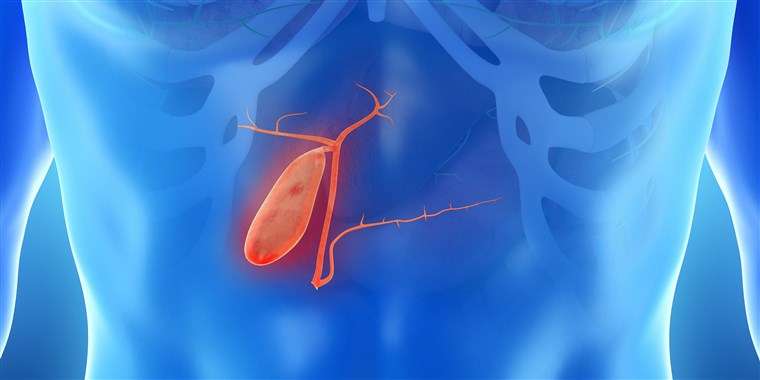Many people in Mumbai have gallbladder problems. Most people opt for gallbladder surgery in Mumbai to get rid of the discomfort caused by their gallbladder. You might still be confused about what are the problems in a gallbladder and its symptoms. Let us begin by understanding the symptoms that your gallbladder has a problem.
Symptoms of a gallbladder problem
Gallbladder conditions share the same signs. These involve:
1. Pain
The most found sign of a gallbladder issue is pain. This pain often happens in the mid-to right-upper section of your abdomen. It can get intermittent and mild, or it can be severe and frequent. In few cases, the pain can start to come in other places of your body, involving the chest and back.
2. Nausea or vomiting
Vomiting and Nausea are general signs of every form of gallbladder issues. Yet, only chronic gallbladder conditions may bring digestive issues, like gas and acid reflux.
3. Fever or chills
Unexplained fever or chills may indicate that you have an infection. If you are infected, treatment is essential before it becomes worse and dangerous. The infection can get life-threatening when it expands to other areas of your body.
4. Chronic diarrhea
Having higher than four bowel movements each day for a minimum of three months may be a symptom of a chronic gallbladder condition.
5. Jaundice
Jaundice, or yellow-tinted skin, may become a symptom of a stone or block inside the common bile duct. The common bile duct is the way that it progresses from the gallbladder to the tiny intestine.
6. Unusual stools or urine
Dark urine or lighter-colored stools are possible symptoms of a common bile duct stone.
Potential gallbladder problems
Any condition affecting your gallbladder is considered a gallbladder problem.
We have mentioned some conditions below that are all gallbladder problems.
- Inflammation of the gallbladder
Gallbladder’s inflammation is known as cholecystitis. It can be either chronic (long-term) or acute (short-term).
Chronic inflammation is the outcome of many acute cholecystitis attacks. Inflammation may ultimately affect the gallbladder, causing it not to work correctly.
- Gallstones
Gallstones are hardened, tiny deposits that occur inside the gallbladder. Such deposits can grow and go unidentified for years.
In reality, several individuals have gallstones and are not aware of them. They ultimately cause issues involving inflammation, pain, and infection. Gallstones bring acute cholecystitis.
Gallstones are often small, not higher than some millimetres wide. Yet, they can develop too many centimetres. Few people grow just one gallstone, while others grow many. As the gallstones grow in size, they can prevent the channels that go out of the gallbladder.
- Common bile duct stones (choledocholithiasis)
When gallstones happen in the common bile duct, it is called choledocholithiasis. Bile is removed from the gallbladder, passed through tiny tubes, and deposited inside the common bile duct. It then goes inside the small intestine.
In many cases, common bile duct stones are often gallstones that grow inside the gallbladder and then moved into the bile duct. This form of stone is known as a secondary stone or secondary common bile duct stone.
Many a time’s stones occur in the common bile duct itself. Such stones are known as primary stones or primary common bile duct stones. This rare form of stone is most likely to bring an infection than a secondary stone.
- Gallbladder disease without stones
Gallstones do not cause each form of gallbladder issue. Gallbladder condition without stones, also known as acalculous gallbladder condition, can happen. In this circumstance, you may face signs commonly related to gallstones without often having stones.
- Common bile duct infection
An infection may grow if the common bile duct is obstructed. Treatment for this disease is successful if the infection is found initially. If it is not, the infection may expand and get fatal.
Treatment for a gallbladder problem
Treatment will be based on your particular gallbladder issue and may involve:
- Over-the-counter (OTC) pain medicines, like ibuprofen (Motrin, Aleve)
- Prescription pain medicines, like morphine and hydrocodone (Kadian, Duramorph)
- Lithotripsy, a surgery that utilizes shock waves to break gallstones and other masses
- Procedure to take out gallstones
- Surgery to take out the whole gallbladder
Not every case will need medical treatment. You may also find pain relief with natural medications, like a heated compress and exercise.
When to see a doctor
The signs of a gallbladder problem may go and come. Yet, you are most likely to develop a gallbladder problem if you have had one before.
Signs that should prompt you to seek instant medical attention involve:
- Abdominal pain that lasts at least 5 hours
- Jaundice
- Pale stools
- Sweating, chills, or low-grade fever if the above signs accompany them
When gallbladder issues are rarely deadly, they should still get treated. You can stop gallbladder issues from worsening if you act and consult a doctor.

